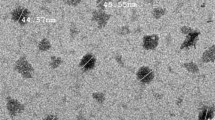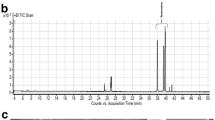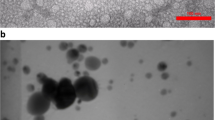Abstract
Turmeric residue (TR), containing residual levels of curcumin, is a solid by-product waste generated after the extraction and separation of curcumin from turmeric root. A feeding trial was conducted to evaluate the effects of TR on the survival of Chinese soft-shelled turtles (SSTs), Pelodiscus sinensis, under a high ambient temperature. A total of 320 female SSTs were assigned randomly to two diets: basal diet (the control group, n=160) and an interventional diet supplemented with 10% TR (the TR group, n=160). Our results demonstrated that supplementation of TR increased the SST survival rate by 135.5%, and superoxide dismutase (SOD) activity of SST liver by 112.8%, and decreased the malondialdehyde (MDA) content of SST liver by 36.4%, compared to the control group. The skin of the SST fed TR showed a golden color. High-performance liquid chromatography (HPLC) analysis indicated that the concentrations of curcumin in TR and the skin of the SST fed TR were (1.69±0.30) and (0.14±0.03) μg/g, respectively. Our observation suggests that supplementation of TR increased the survival rate of SST under high ambient temperatures. We speculated that the increased survival rate and tolerance at the high ambient temperature were associated with the anti-oxidation activity of curcumin from TR. Moreover, curcumin in TR could be deposited in SST skin, which made it more favored in the market of China. Our findings provide new knowledge and evidence to effectively reuse TR as a feed additive in animal and aquatic farming.
概要
目的
评估饲料中添加姜黄渣对中华鳖存活率及抗高温 应激能力的改善作用;通过中华鳖的抗氧化能力 分析,探讨姜黄渣的生化作用机制。
创新点
证实了饲料中添加姜黄渣对中华鳖具有增强抗高 温能力,提高存活率的作用,为姜黄渣作为新的 水产饲料添加剂的资源开发应用提供了重要科 学依据。
方法
将320 只雌性中华鳖(体重约250 g)随机分为对照组(标准饲料)和实验组(饲料中添加10%的姜黄渣)。在2013 年7 月到10 月分别考察实验组和对照组中华鳖的体重、存活率;分析试验地海盐县的气温变化与中华鳖存活率的相关性;用超氧化物歧化酶(SOD)和丙二醛(MDA)试剂盒分别检测了两组中华鳖肝组织的SOD 酶活力及MDA 含量;用高效液相色谱分别测定比较了两组中华鳖皮肤的姜黄素含量。
结论
补充姜黄渣的中华鳖皮肤呈现金黄色,皮肤所含色素为姜黄素,平均含量为 (0.14±0.03) μg/g。存活率调查显示,实验组的中华鳖存活率比对照组高135.5%;SOD 和MDA 分析显示,实验组中华鳖肝组织的SOD 酶活比对照组高112.8%,MDA 含量比对照组低36.4%。根据气温资料分析推测,持续高温容易导致中华鳖死亡,补充姜黄渣可有效降低高温造成的死亡率。综合分析显示,补充姜黄渣能显著提高中华鳖的存活率及抗高温应激能力,其作用与姜黄渣所含姜黄素的抗氧化活性相关。
Similar content being viewed by others
References
Blunden J, Arndt DS, 2014. State of the climate in 2013. Bull Amer Meteor Soc, 95(7):S1–S257. https://doi.org/10.1175/2014BAMSStateoftheClimate.1
Chen CY, Huang CH, 2015. Effects of dietary magnesium on the growth, carapace strength and tissue magnesium concentrations of soft-shelled turtle, Pelodiscus sinensis (Wiegmann). Aquac Res, 46(9):2116–2123. https://doi.org/10.1111/are.12367
Chen JS, Zhu NY, Kong L, et al., 2014. First reported fatal Bacillus thuringiensis infections in Chinese soft-shelled turtles (Trionyx sinensis). Aquaculture, 428-429:16–20. https://doi.org/10.1016/j.aquaculture.2014.02.018
Chen LP, Huang CH, 2015. Estimation of dietary vitamin A requirement of juvenile soft-shelled turtle, Pelodiscus sinensis. Aquac Nutr, 21(4):457–463. https://doi.org/10.1111/anu.12172
Chin D, Huebbe P, Frank J, et al., 2014. Curcumin may impair iron status when fed to mice for six months. Redox Biol, 2(1):563–569. https://doi.org/10.1016/j.redox.2014.01.018
Dang W, Zhang W, Du WG, 2015. Incubation temperature affects the immune function of hatchling soft-shelled turtles, Pelodiscus sinensis. Sci Rep, 5:10594. https://doi.org/10.1038/srep10594
Du WG, Ji X, 2003. The effects of incubation thermal environments on size, locomotor performance and early growth of hatchling soft-shelled turtles, Pelodiscus sinensis. J. Therm. Biol, 28(4):279–286. https://doi.org/10.1016/S0306-4565(03)00003-2
Dunsmore KE, Chen PG, Wong HR, et al., 2001. Curcumin, a medicinal herbal compound capable of inducing the heat shock response. Crit Care Med, 29(11):2199–2204. https://doi.org/10.1097/00003246-200111000-00024
Garcia-Nino WR, Tapia E, Zazueta C, et al., 2013. Curcumin pretreatment prevents potassium dichromate-induced hepatotoxicity, oxidative stress, decreased respiratory complex I activity, and membrane permeability transition pore opening. Evid-Based Compl Alt, 2013:424692. https://doi.org/10.1155/2013/424692
Ip YK, Lee SML, Wong WP, et al., 2008. Mechanisms of and defense against acute ammonia toxicity in the aquatic Chinese soft-shelled turtle, Pelodiscus sinensis. Aquat Toxicol, 86(2):185–196. https://doi.org/10.1016/j.aquatox.2007.10.013
Li CL, Yang ZG, Qing YL, 1995. Pelodiscus sinensis and environment. Irrig Fish Indust, 4:25–27 (in Chinese).
Mahmood K, Zia KM, Zuber M, et al., 2015. Recent developments in curcumin and curcumin based polymeric materials for biomedical applications: a review. Int J Biol Macrobil, 81:877–890. https://doi.org/10.1016/j.ijbiomac.2015.09.026
Mathuria N, Verma RJ, 2007. Curcumin ameliorates aflatoxininduced lipid peroxidation in liver, kidney and testis of mice—an in vitro study. Acta Pol Pharm, 64(5):413–416.
Perez-Casanova JC, Lall SP, Gamperl AK, 2010. Effects of dietary protein and lipid level, and water temperature, on the post-feeding oxygen consumption of Atlantic cod and haddock. Aquac Res, 41(2):198–209. https://doi.org/10.1111/j.1365-2109.2009.02318.x
Sahin K, Orhan C, Tuzcu Z, et al., 2012. Curcumin ameloriates heat stress via inhibition of oxidative stress and modulation of Nrf2/HO-1 pathway in quail. Food Chem Toxicol, 50(11):4035–4041. https://doi.org/10.1016/j.fct.2012.08.029
Schiborr C, Eckert GP, Rimbach G, et al., 2010. A validated method for the quantification of curcumin in plasma and brain tissue by fast narrow-bore high-performance liquid chromatography with fluorescence detection. Anal Bioanal Chem, 397(5):1917–1925. https://doi.org/10.1007/s00216-010-3719-3
Sharma D, Sethi P, Hussain E, et al., 2009. Curcumin counteracts the aluminium-induced ageing-related alterations in oxidative stress, Na+, K+, ATPase and protein kinase C in adult and old rat brain regions. Biogerontology, 10(4): 489–502. https://doi.org/10.1007/s10522-008-9195-x
Shen LR, Parnell LD, Ordovas JM, et al., 2013a. Curcumin and aging. BioFactors, 39(1):133–140. https://doi.org/10.1002/biof.1086
Shen LR, Xiao F, Yuan P, et al., 2013b. Curcuminsupplemented diets increase superoxide dismutase activity and mean lifespan in Drosophila. Age, 35(4):1133–1142. https://doi.org/10.1007/s11357-012-9438-2
Subudhi U, Das K, Paital B, et al., 2008. Alleviation of enhanced oxidative stress and oxygen consumption of Lthyroxine induced hyperthyroid rat liver mitochondria by vitamin E and curcumin. Chem-Biol Inter, 173(2):105–114. https://doi.org/10.1016/j.cbi.2008.02.005
Teiten MH, Reuter S, Schmucker S, et al., 2009. Induction of heat shock response by curcumin in human leukemia cells. Cancer Lett, 279(2):145–154. https://doi.org/10.1016/j.canlet.2009.01.031
Wang CC, Huang CH, 2015. Effects of dietary vitamin C on growth, lipid oxidation, and carapace strength of softshelled turtle, Pelodiscus sinensis. Aquaculture, 445:1–4. https://doi.org/10.1016/j.aquaculture.2015.04.009
Yarru LP, Settivari RS, Gowda NKS, et al., 2009. Effects of turmeric (Curcuma longa) on the expression of hepatic genes associated with biotransformation, antioxidant, and immune systems in broiler chicks fed aflatoxin. Poult Sci, 88(12):2620–2627. https://doi.org/10.3382/ps.2009-00204
Zhang DW, Fu M, Gao SH, et al., 2013. Curcumin and diabetes: a systematic review. Evid-Based Compl Alt, 2013: 1–16. https://doi.org/10.1155/2013/636053
Zhang X, Peng L, Wang Y, et al., 2014. Effect of dietary supplementation of probiotic on performance and intestinal microflora of Chinese soft-shelled turtle (Trionyx sinensis). Aquac Nutr, 20(6):667–674. https://doi.org/10.1111/anu.12128
Zhou HW, Luo BL, 2013. Curcumin physiological activity and application in broilers production. Feed Rev, 8:41–44 (in Chinese).
Zhou XQ, Niu CJ, Sun RJ, et al., 2004. The effects of vitamin E on antiacid stress ability in juvenile soft-shelled turtles (Pelodiscus sinensis). Comp Biochem Phys C, 137(4): 299–305. https://doi.org/10.1016/j.cca.2004.01.009
Acknowledgements
The authors are grateful to Prof. Guo-nian ZHU (Zhejiang University, Hangzhou, China) for his technical assistance.
Mention of trade names or commercial products in this publication is solely for the purpose of providing specific information and does not imply recommendation or endorsement by the U.S. Department of Agriculture (USDA). The USDA is an equal opportunity provider and employer.
Author information
Authors and Affiliations
Corresponding author
Additional information
Project supported by the National Natural Science Foundation of China (No. 31271848) and the Foundation of Fuli Institute of Food Science of Zhejiang University (No. KY201404), China
Rights and permissions
About this article
Cite this article
Chen, Y., Zhang, Yf., Qian, Hc. et al. Supplementation with turmeric residue increased survival of the Chinese soft-shelled turtle (Pelodiscus sinensis) under high ambient temperatures. J. Zhejiang Univ. Sci. B 19, 245–252 (2018). https://doi.org/10.1631/jzus.B1600451
Received:
Revised:
Published:
Issue Date:
DOI: https://doi.org/10.1631/jzus.B1600451
Keywords
- Turmeric residue (TR)
- Curcumin
- Chinese soft-shelled turtle (SST)
- Survival
- High ambient temperature
- Antioxidant




